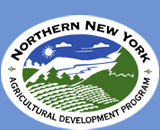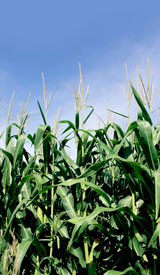May 7, 2008
Contact: Dr. Quirine M. Ketterings, Cornell University, 607-255-3061;
NNYADP Co-Chairs: Jon Greenwood, 315-386-3231; Joe Giroux, 518-563-7523
Maximizing Farm Efficiency Resources Now Online at
www.nnyagdev.org
�Maximizing on-farm plant nutrient resources is critical as crop
production costs continue to rise,� says St. Lawrence County dairy
farmer Jon Greenwood. �The research made available through the Northern
New York Agricultural Development Program (NNYADP) and Cornell
University provides essential information on how to improve nutrient use
efficiencies. By making better use of manure to meet crop needs we can
reduce spending on fertilizer.�
Clinton County dairyman Joe Giroux says, �The fact sheets and research
report summaries with data specific to Northern New York boil down
stacks of data from years of study across multiple farms into the
must-know details that I need to have to run my farm efficiently.�
Greenwood and Giroux co-chair the Northern New York Agricultural
Development Program�s farmer-driven research grant, education and
outreach program.
The latest resources loaded to the NNYADP website at
www.nnyagdev.org provide
information on �Manure Sampling, Analysis & Interpretation� and
�Nutrient Management Data Collection.�
The fact sheets, produced by the Nutrient Management Spear Program at
Cornell University, provide how-to information on testing manure to
determine how many pounds of each nutrient are being applied to fields
and how to collect data to develop a fertilizer and manure management
plan.
Cornell University Crop and Soil Sciences Associate Professor Quirine M.
Ketterings says, �Sampling directly from the manure spreader gives the
most accurate representation of the amount of nitrogen, phosphorus and
potassium being applied to the field.�
The sampling fact sheet provides information on how to sample the
various types of manure: daily spread slurry and solid, stored solid,
stored agitated liquid or slurry, and stored non-agitated liquid or
slurry. For some types a minimum of one sample is sufficient for
testing. For the stored solid and stored, non-agitated liquid of slurry,
at least three samples should be collected.
Samples should be frozen and then sent to the Cornell Nutrient Analysis
Laboratory or another manure testing facility for testing.
�A running average of test results for each manure source should be used
for nutrient management planning,� Ketterings says. �If the nutrient
needs of the crop are known and the spreader is properly calibrated,
manure N, P and K can be applied with sufficient accuracy to meet, but
not exceed, crop needs.�
The Nutrient Management Data Collection fact sheet emphasizes that
developing a nutrient management plan that meets crop nutrient needs
while also reducing erosion, leaching and runoff risks requires a lot of
farm and field data. The fact sheet serves as a guide to data collection
for cropland nutrient management planning according to the Natural
Resource Conservation Service 590 Standard.
Local USDA Service Center NRCS and Farm Services Agency offices and the
county Soil and Water Conservation District may provide maps or data for
your farm. Maps and flowcharts for barns, silos, milkhouses and storage
systems are helpful in understanding how nutrients move on the farm.
Essential information for developing an nutrient management plan
includes soil types and soil fertility status (soil test data), drainage
class, field rotations, manure application histories for each field, and
total amount of manure to be allocated to each field. Types of manure
spreaders, manure storage capacity, fertilizer blends used and the
application rates commonly use by the farmer are also important
information for developing a plan for how, when, and where to apply
nutrients to crops.
Links to the Nutrient Management Data Collection and Manure Sampling,
Analysis & Interpretation facts sheets are online at
www.nnyagdev.org.



